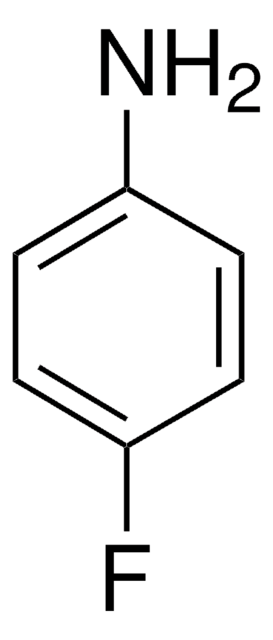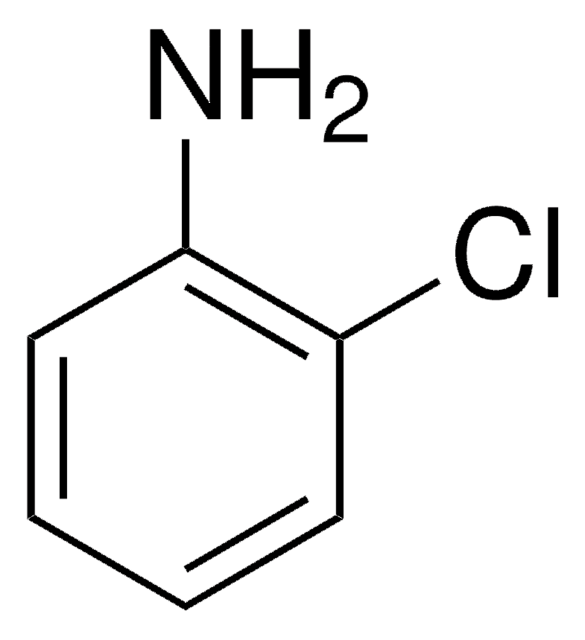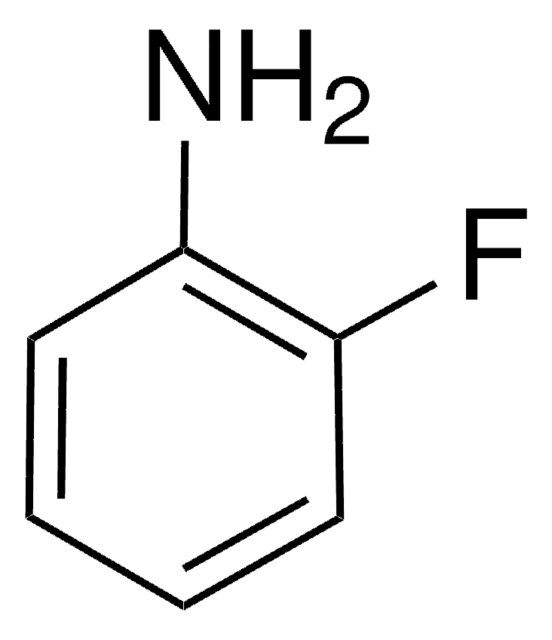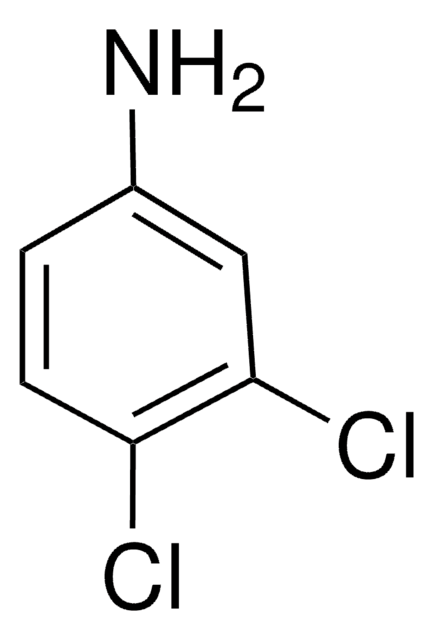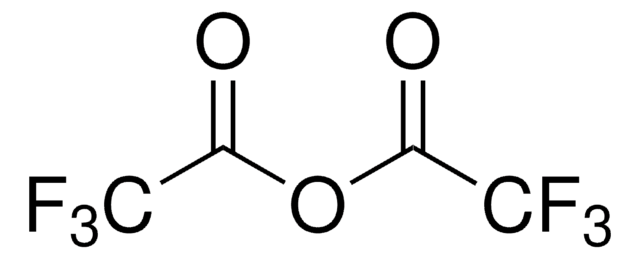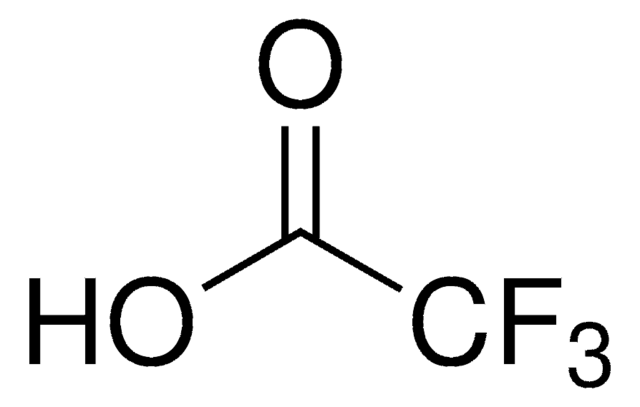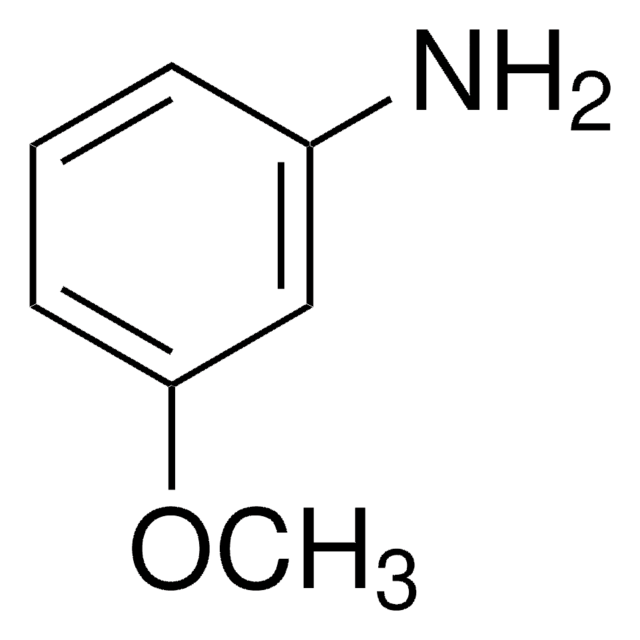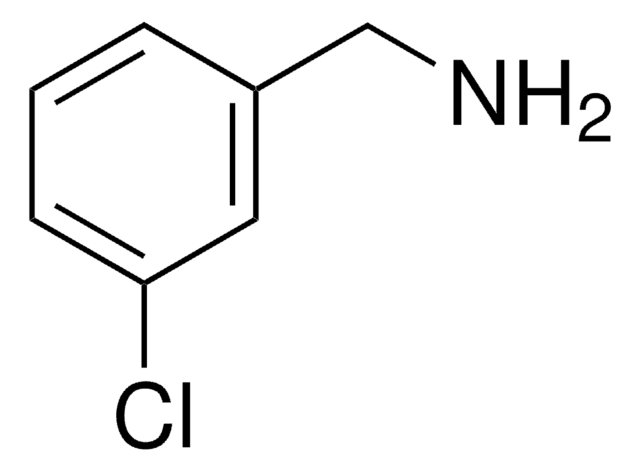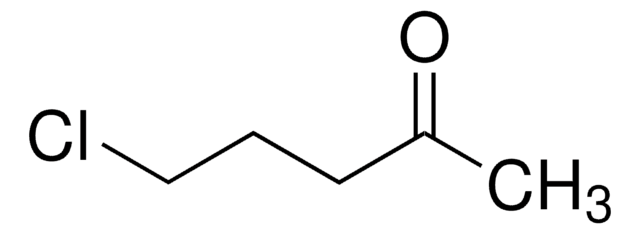C22407
3-Chloroaniline
99%
Synonyme(s) :
1-Amino-3-chlorobenzene, 3-Amino-1-chlorobenzene, 3-Chloro-1-aminobenzene, 3-Chlorobenzenamine, 3-Chlorophenylamine, 5-Chloroaniline, m-Aminochlorobenzene, m-Chloroaniline, m-Chlorophenylamine
About This Item
Produits recommandés
Pression de vapeur
1 mmHg ( 63.5 °C)
Niveau de qualité
Essai
99%
Forme
liquid
Indice de réfraction
n20/D 1.594 (lit.)
pb
95-96 °C/11 mmHg (lit.)
Pf
−11-−9 °C (lit.)
Densité
1.206 g/mL at 25 °C (lit.)
Chaîne SMILES
Nc1cccc(Cl)c1
InChI
1S/C6H6ClN/c7-5-2-1-3-6(8)4-5/h1-4H,8H2
Clé InChI
PNPCRKVUWYDDST-UHFFFAOYSA-N
Vous recherchez des produits similaires ? Visite Guide de comparaison des produits
Catégories apparentées
Application
- Elevated level of the second messenger c-di-GMP in Comamonas testosteroni enhances biofilm formation and biofilm-based biodegradation of 3-chloroaniline.: This research reveals that increased levels of c-di-GMP in Comamonas testosteroni enhance both biofilm formation and the biodegradation efficiency of 3-chloroaniline, suggesting a strategy to improve bioremediation processes (Wu et al., 2015).
- Degradation of chloroanilines by toluene dioxygenase from Pseudomonas putida T57.: The study investigates the role of toluene dioxygenase from Pseudomonas putida T57 in degrading chloroanilines, providing insights into the enzymatic mechanisms and potential applications in treating chloroaniline pollutants (Nitisakulkan et al., 2014).
- Bioaugmentation as a tool to protect the structure and function of an activated-sludge microbial community against a 3-chloroaniline shock load.: The study evaluates the effectiveness of bioaugmentation in maintaining the stability and functionality of microbial communities in activated sludge systems exposed to 3-chloroaniline, supporting its application in wastewater treatment (Boon et al., 2003).
Mention d'avertissement
Danger
Mentions de danger
Classification des risques
Acute Tox. 2 Inhalation - Acute Tox. 3 Dermal - Acute Tox. 3 Oral - Aquatic Acute 1 - Aquatic Chronic 1 - Eye Irrit. 2 - Skin Sens. 1B - STOT RE 2 Oral
Organes cibles
Endocrine system
Code de la classe de stockage
6.1A - Combustible acute toxic Cat. 1 and 2 / very toxic hazardous materials
Classe de danger pour l'eau (WGK)
WGK 2
Point d'éclair (°F)
244.4 °F - closed cup
Point d'éclair (°C)
118 °C - closed cup
Équipement de protection individuelle
Eyeshields, Faceshields, Gloves, type ABEK (EN14387) respirator filter
Faites votre choix parmi les versions les plus récentes :
Déjà en possession de ce produit ?
Retrouvez la documentation relative aux produits que vous avez récemment achetés dans la Bibliothèque de documents.
Les clients ont également consulté
Notre équipe de scientifiques dispose d'une expérience dans tous les secteurs de la recherche, notamment en sciences de la vie, science des matériaux, synthèse chimique, chromatographie, analyse et dans de nombreux autres domaines..
Contacter notre Service technique
